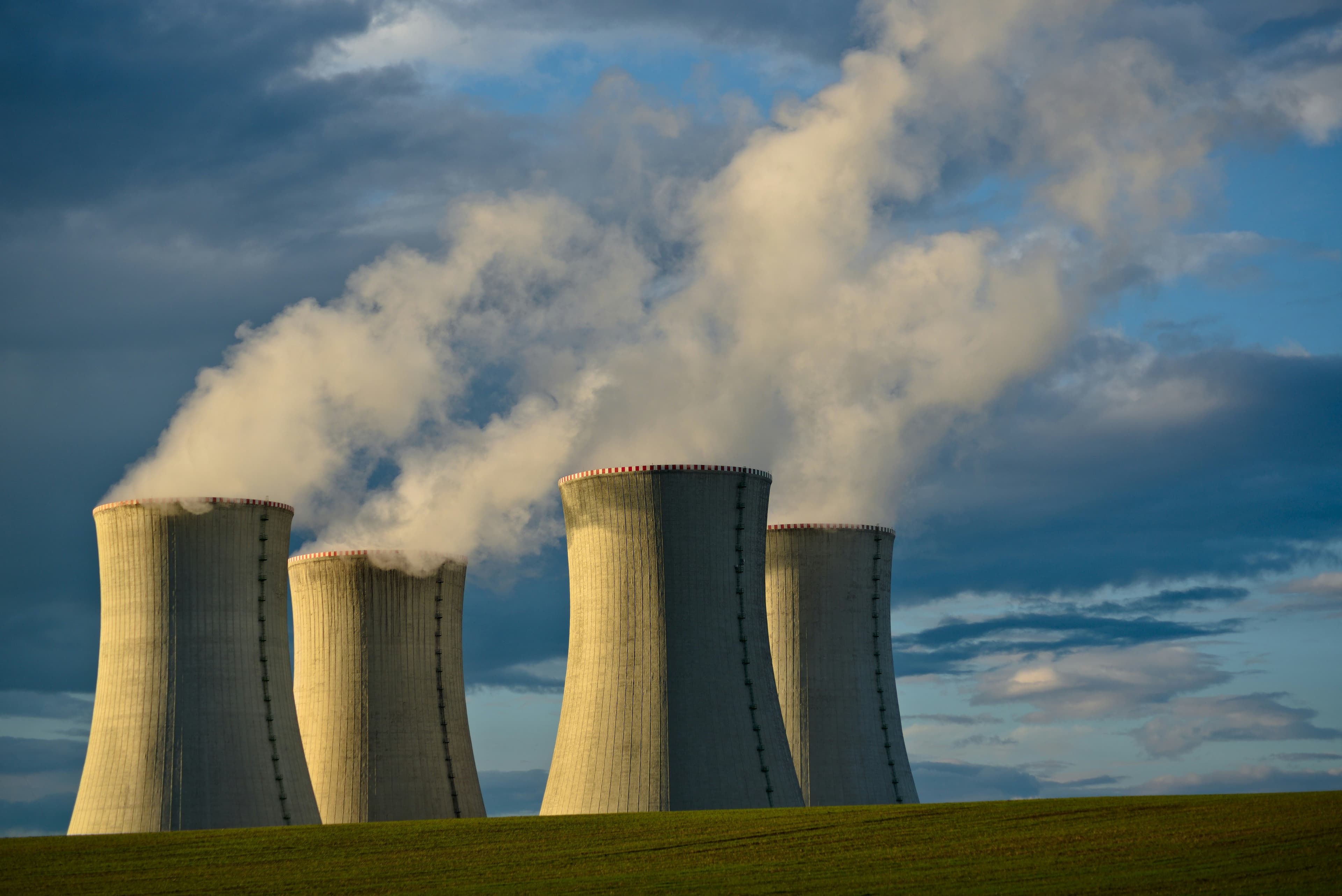
Accelerate clean energy transition with nuclear power
 Google
Google总结
Signing the world’s first corporate agreement to purchase nuclear energy from multiple small modular reactors to be developed by Kairos Power.
Key resources
Context
Initiative location: Montgomery County, Tennessee and Jackson County, Alabama, USA.
Google uses energy to operate their data centers and offices around the world and to power products and services like Search and YouTube that billions of people rely on every day. They’re prioritizing clean energy solutions and using AI and advanced technologies to build a stronger, more resilient electricity system. That work begins with their own operations where they have the greatest potential for direct impact.
In 2024, Google reduced their data center energy emissions by 12% compared to 2023, despite their data center electricity consumption increasing 27% year-on-year.(i)
Clean energy sources that can be counted on anytime and can turn on or off as needed play an important role in creating a reliable, affordable, and clean energy system that can power economic and scientific opportunity.
Solution
Google is working to catalyze a wide range of advanced energy technologies to power the world’s growing electricity demand with clean, reliable energy sources and ensure that they are operating and growing their business in a way that helps build a more resilient, carbon-free electricity system.
Many early-stage advanced nuclear technologies struggle to secure the financing needed to commercialize and scale, due to their novelty and the high costs of first-of-a-kind (FOAK) projects. The company played a key early role in taking wind and solar power to greater scale through their corporate power purchase agreements (PPAs), and now Google is signing partnerships and long-term offtake agreements for promising nuclear technologies to provide the same market for nuclear power.
The company signed the world’s first corporate agreement to purchase nuclear energy from multiple small modular reactors (SMRs) to be developed by Kairos Power, which aims to add up to 500 MW of new nuclear power to the U.S. electricity system by 2035. According to the U.S. Department of Energy, an "orderbook" of 5-10 deployments of at least one reactor design is needed to enable the commercial liftoff of advanced nuclear technologies. By procuring electricity from successive deployments of reactors by Kairos Power, the company aims to help lower costs, enable new learnings, and bring this FOAK technology to market more quickly.
In August, 2025, Google announced the first offtake agreement of Kairos Power’s advanced nuclear reactor — the Hermes 2 Plant in Oak Ridge, Tennessee — through a new power purchase agreement (PPA) between Kairos Power and Tennessee Valley Authority (TVA). Marking the first purchase of electricity from an advanced GEN IV reactor by a U.S. utility, this agreement will enable 50 megawatts (MW) of nuclear energy on TVA’s grid that powers Google data centers in Montgomery County, Tennessee and Jackson County, Alabama.
Impact
Sustainability impact
Climate
This initiative primarily targets scope 2 emissions. Nuclear solutions offer a clean, round-the-clock power source that can help Google reliably meet electricity demands with carbon-free energy every hour of every day. Advancing these power sources in close partnership with supportive local communities will rapidly drive the decarbonization of electricity grids around the world.
Nature
Small Modular Reactors (SMRs) have a compact design, leading to a smaller physical ecological footprint than conventional power plants, which means less land disturbance and habitat fragmentation for nature and biodiversity. Gen IV reactors have been designed for safety and fuel efficiency, with a walk-away-safe design that dramatically increases safety in catastrophic events, and specially designed fuel that improves long term storage.
Social
Investing in advanced nuclear technology can provide direct economic benefits to communities across the United States since nuclear power has the highest economic impact of any power generation source and creates high-paying jobs. In fact, the U.S. Department of Energy estimates that reaching 200 GW of advanced nuclear capacity in the U.S. by 2050 will require an additional 375,000 workers.(ii)
Business impact
Benefits
Nuclear is a clean, round-the-clock energy source that can complement variable renewable sources like wind and solar, driving progress toward Google’s ambition to run their global data center fleet on carbon-free energy every hour of every day.
Implementation
Typical business profile
Utility, large corporations or government agencies
Approach
The process primarily links a reliable Off-taker (buyer of the power) with the SMR Developer/Owner (seller of the power)
Planning and framework agreements
Technology and Site Selection
Developer/owner: selects a specific SMR design and potential deployment sites. These can often leverage existing infrastructure, such as interconnection from retired coal plant or a permitted land at a legacy nuclear site
Off-taker: define energy needs (capacity, duration, location, willingness to pay) and confirms the SMR technology is capable of meeting them
Preliminary Due Diligence and Feasibility
Developer / owner: site-specific studies, cost estimates and secures a pre-licensing review or engagement with the national nuclear regulator (e.g. the US NRC)
Off-taker: Conducts technical and financial analysis (e.g. Levelized Cost of Electricity, Long-term price stability) to determine the range of parameters for the SMR project will be competitive
Heads of Terms and Master Development Agreement
Parties sign an agreement to signal commitment, defining the parameters of the relationship and risk sharing framework: project size (MW), desired commercial operation dates, PPA price ranges, performance guarantees, and the other general terms of the PPA (often 20+ years). This is critical for the developer to secure initial financing
Phase 2: Power Purchase Agreement Negotiation and Finalization
Deployment site selection between the parties: Off-taker and developer jointly agree on a location for a nuclear development that maximizes value for off-taker while minimizing risk for developer
Negotiate Key PPA Terms: Site and deployment specific terms identified in the Master Development Agreement are negotiated for the specific deployment
Full PPA Execution
Once all commercial, legal and financial terms are finalized, the definitive, long-term PPA is executed
Phase 3: Project Execution and Commercial Operation
Finalize design, Construction, and Licensing
Original Equipment Manufacturer (OEM) finalizes site-specific SMR design and initiates regulatory approval for construction with NRC
SMR components are fabricated in a controlled factory setting and construction begins onsite while working with the nuclear regulator to ensure nuclear construction approval and final operational license
Commissioning and Commercial Operation
Once construction is complete, the SMR undergoes testing and commissioning
Upon receiving the final operating license, the PPA officially begins with the off-taker starting to purchase and pay for the carbon-free electricity
Stakeholders involved
Off-taker:
Finance: including assessing the financial risk of a long term contract, supports analysis to inform pricing structure and feasible risk sharing options
Sustainability: Ensuring the overall framework is aligned to carbon reduction and clean energy goals
Energy/Operations/IT: Defines the energy load needed and when. Managing the Request for Proposal process, vets the energy seller/developer and leads commercial negotiations
Executive Leadership: Final authorization for the financial commitment and public announcement of the deal
Legal Counsel: Drafts and reviews the PPA contract
OEMs – Manage reactor design and commissioning, partner for long term deployment benefits.
Utilities - support the long term operation of reactors and manages interconnection to the grid
Key parameters to consider
FOAK risk: New reactor technology brings risks that reactors can be delayed or over budget. New system integration, construction/manufacturing, and first commissioning mean that power may not show up on time and costs may be higher than initially planned.
Bespoke negotiations: because of the unproven technology and high uncertainty, parties must work together to design partnership frameworks that ensure appropriate risk sharing and long term benefits to both parties. Due to the innovative technology, parties may wish to undertake initial technical due diligence. This approach may take 12-18 months to finalize commitments.
PPA timelines: Traditional solar/wind PPAs average 15 years. Some nuclear PPAs are longer to reflect the life of the asset and overall cost. PPAs prices with FOAK deployments are also likely to be higher than nth-of-a-kind deployments due to higher initial costs.